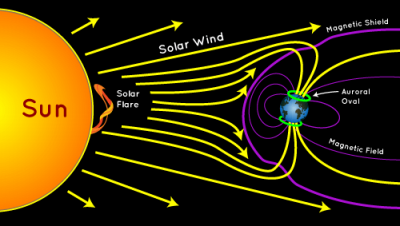
An aurora is nothing but a beautiful light show in the sky. One can witness auroras near the North and the South Poles. If you witness it at the North Pole, it is aurora borealis or northern lights. At the South Pole, it is called aurora australis or southern lights. Auroras are caused by the interaction of charged particles from the Sun with atoms in the Earth’s upper atmosphere. When there is a solar storm, the Sun sends out gusts of charged solar particles across space. If the Earth is in the path of the particle stream, our planet’s magnetic field and atmosphere react. As the particles pass through Earth’s magnetic shield, they mingle with atoms and molecules of oxygen, nitrogen and other elements, resulting in the spectacular display of light in the sky. Last month’s G3 geomagnetic storm brought bright, dynamic auroras that were visible as south as Pennsylvania, lowa and Oregon.
The Sun sends us more than heat and light; it sends lots of other energy and small particles our way. The protective magnetic field around Earth shields us from most of the energy and particles, and we don’t even notice them.
But the Sun doesn’t send the same amount of energy all the time. There is a constant streaming solar wind and there are also solar storms. During one kind of solar storm called a coronal mass ejection, the Sun burps out a huge bubble of electrified gas that can travel through space at high speeds.
Credit : Google
Picture Credit : Google




